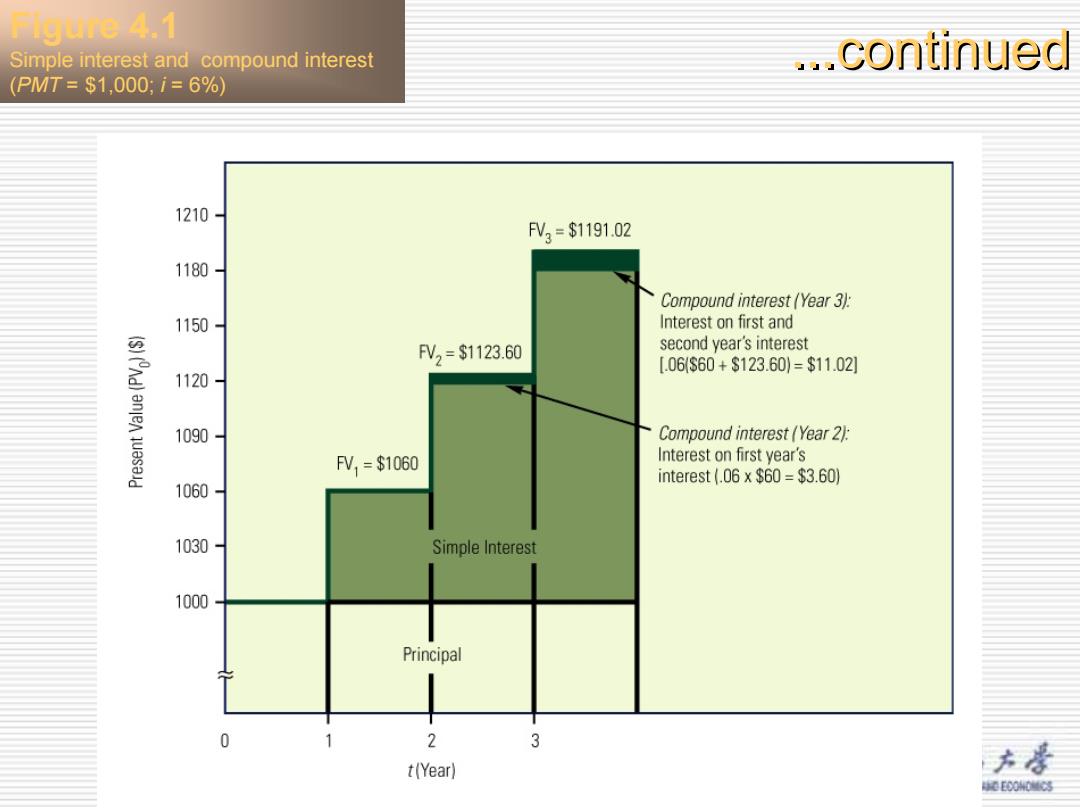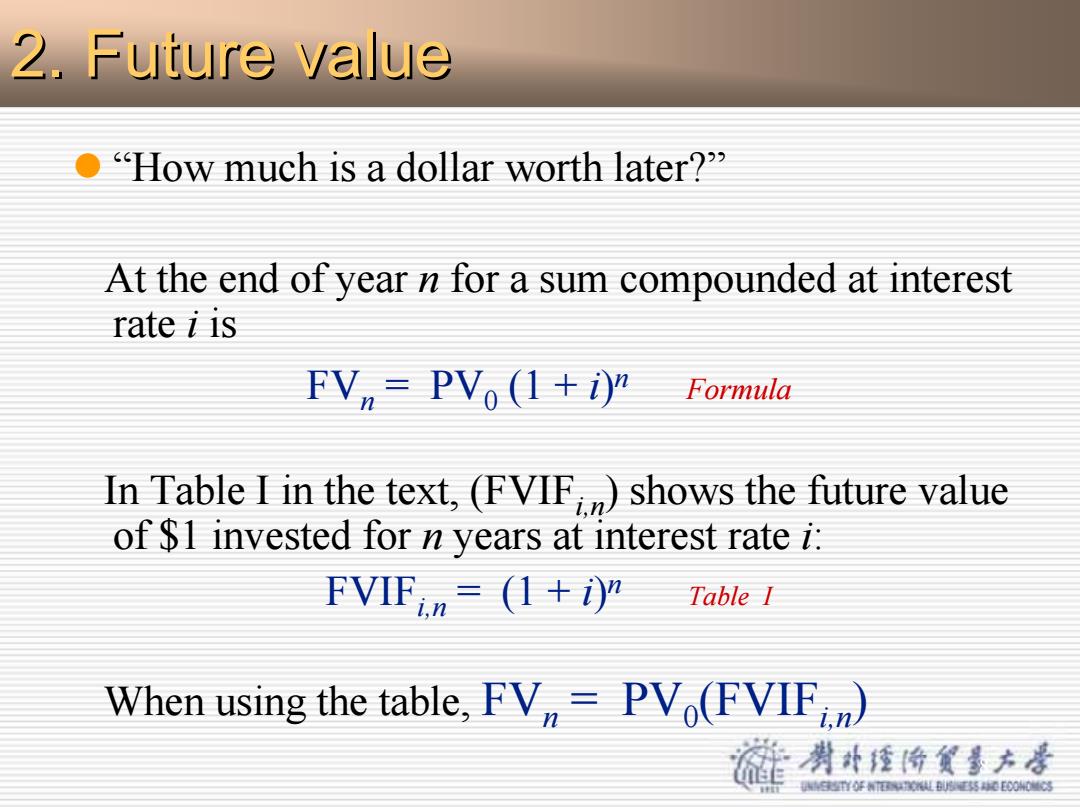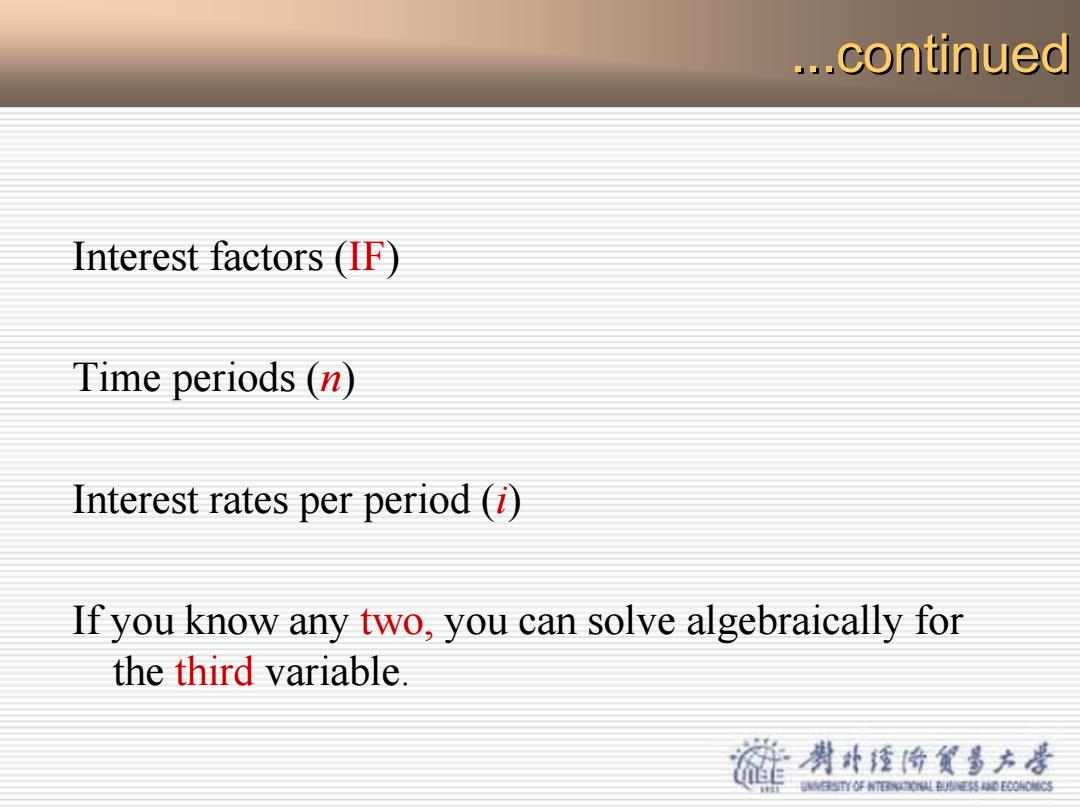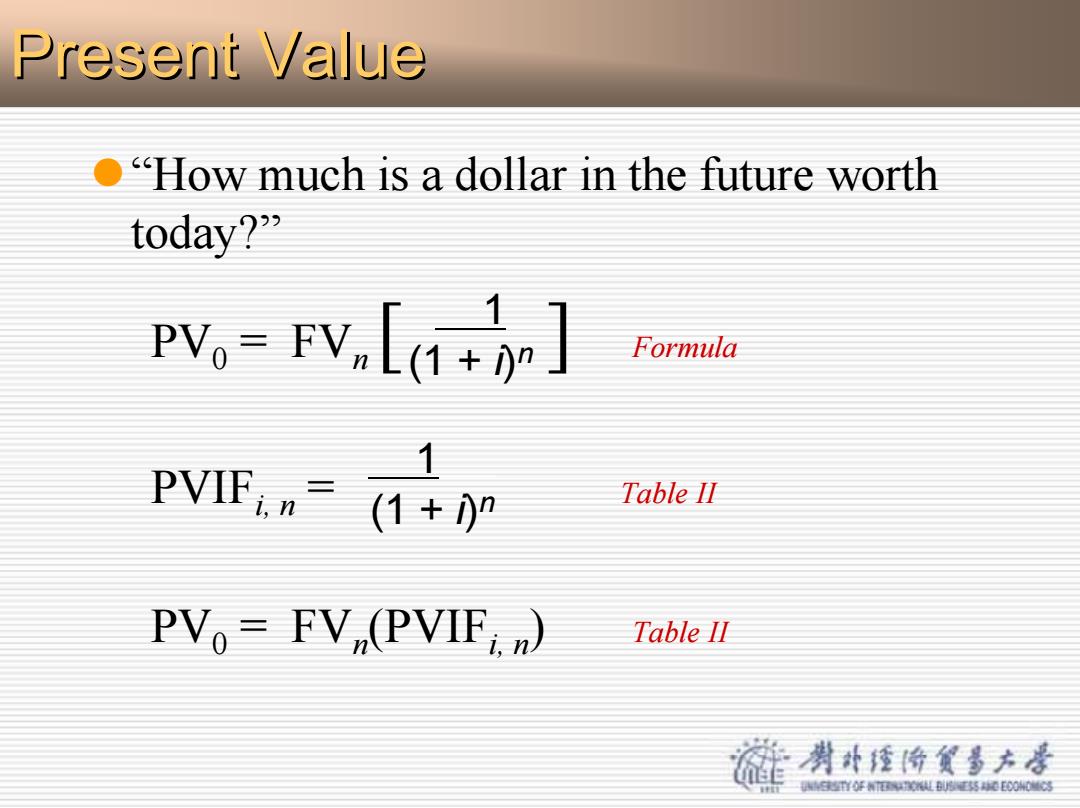
Iigure 4.1 Simple interest and compound interest ...continued (PMT=$1,000:i=6%) 1210 FV2=$1191.02 1180 Compound interest (Year 3): 1150 Interest on first and V2=$1123.60 second year's interest [.06$60+$123.60)=$11.02 1120 1090 Compound interest(Year 2): FV1=$1060 Interest on first year's interest(.06x$60=$3.60】 1060 1030 Simple Interest 1000 Principal 0 2 3 t(Year) 六是 0E00h03
Figure 4.1 Simple interest and compound interest (PMT = $1,000; i = 6%) ...continued ...continued

igure 4.2 Growth of a $100 Investment at 650 ...continued Various Compound Interest Rates 600 550 i=10% 500 450 400 i=5% 350 300 250 200 1=2% 150 PV0=100 5 1015 202530 35 40 价货多方号 (Year) B到E事0O003
7 ...continued ...continued Figure 4.2 Growth of a $100 Investment at Various Compound Interest Rates

2.Future value O "How much is a dollar worth later?" At the end of year n for a sum compounded at interest rate i is FV=PVo(1+i Formula In Table I in the text,(FVIF)shows the future value of $1 invested for n years at interest rate i: FVIFn=(1+i Table I When using the table,FV=PVo(FVIF) ·补楂价货参方居 YO年NEB证事0000
8 2. Future value 2. Future value z “How much is a dollar worth later?” At the end of year n for a sum compounded at interest rate i is FV n = PV 0 (1 + i ) n Formula In Table I in the text, (FVIFi,n) shows the future value of $1 invested for n years at interest rate i: FVIFi,n = (1 + i ) n Table I When using the table, FV n = PV 0(FVIFi,n )

...continued Interest factors(IF) Time periods(n) Interest rates per period (i) If you know any two,you can solve algebraically for the third variable. 0色E 渊补楂价贸多方号 YO年N0事0E000
...continued continued Interest factors (IF) Time periods (n) Interest rates per period (i) If you know any two, you can solve algebraically for the third variable

Present Value O"How much is a dollar in the future worth today?" PV=FV,L(] Formula 1 PVIFn (1+1) Table II PVo=FV(PVIF Table II 剥外经价贫多方号 YO年NEB证事0000
z“How much is a dollar in the future worth today?” PV0 = FVn [ ] Formula PVIFi, n = Table II PV0 = FVn(PVIFi, n) Table II 1 (1 + i)n 1 (1 + i)n Present Value Present Value